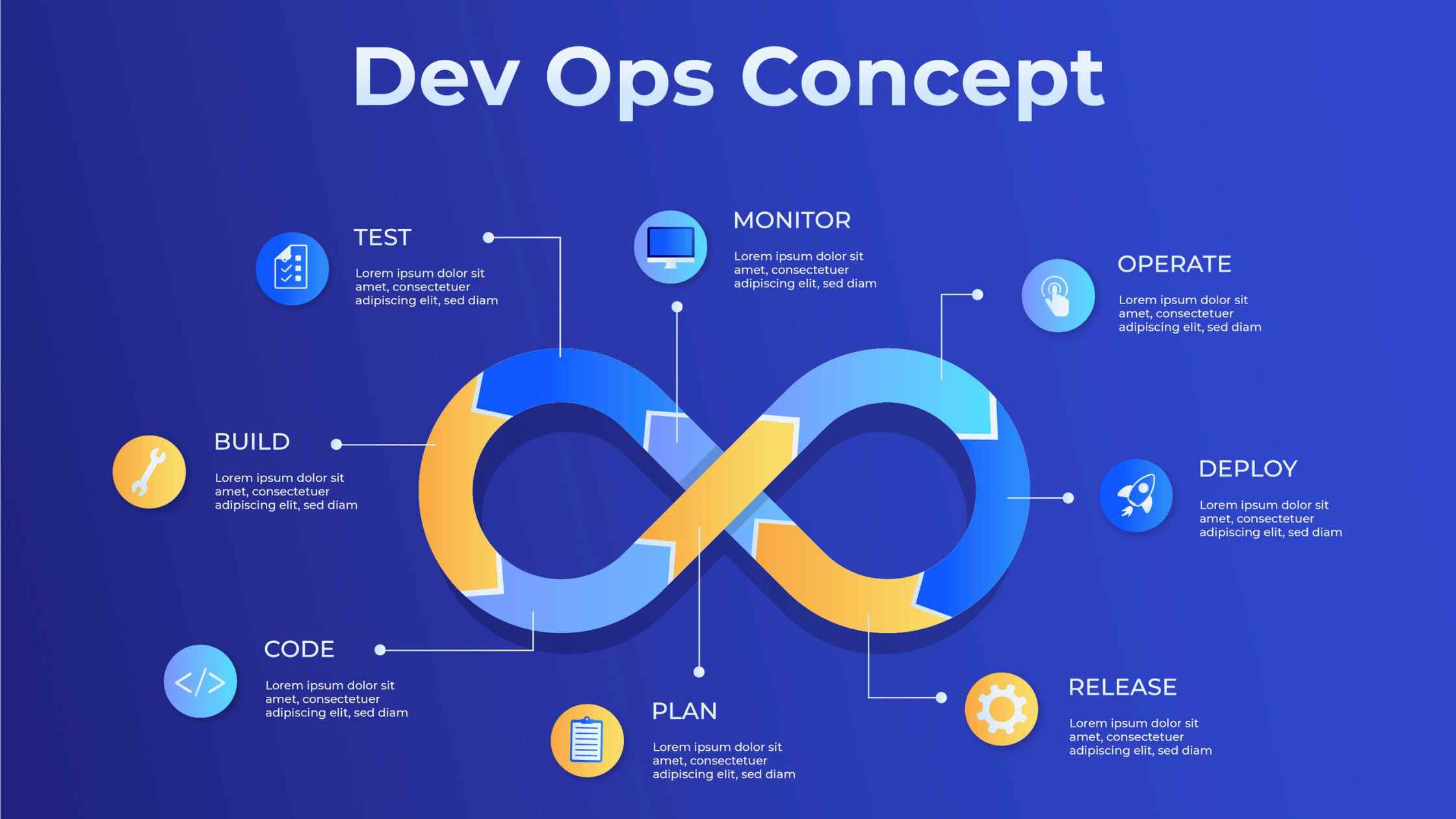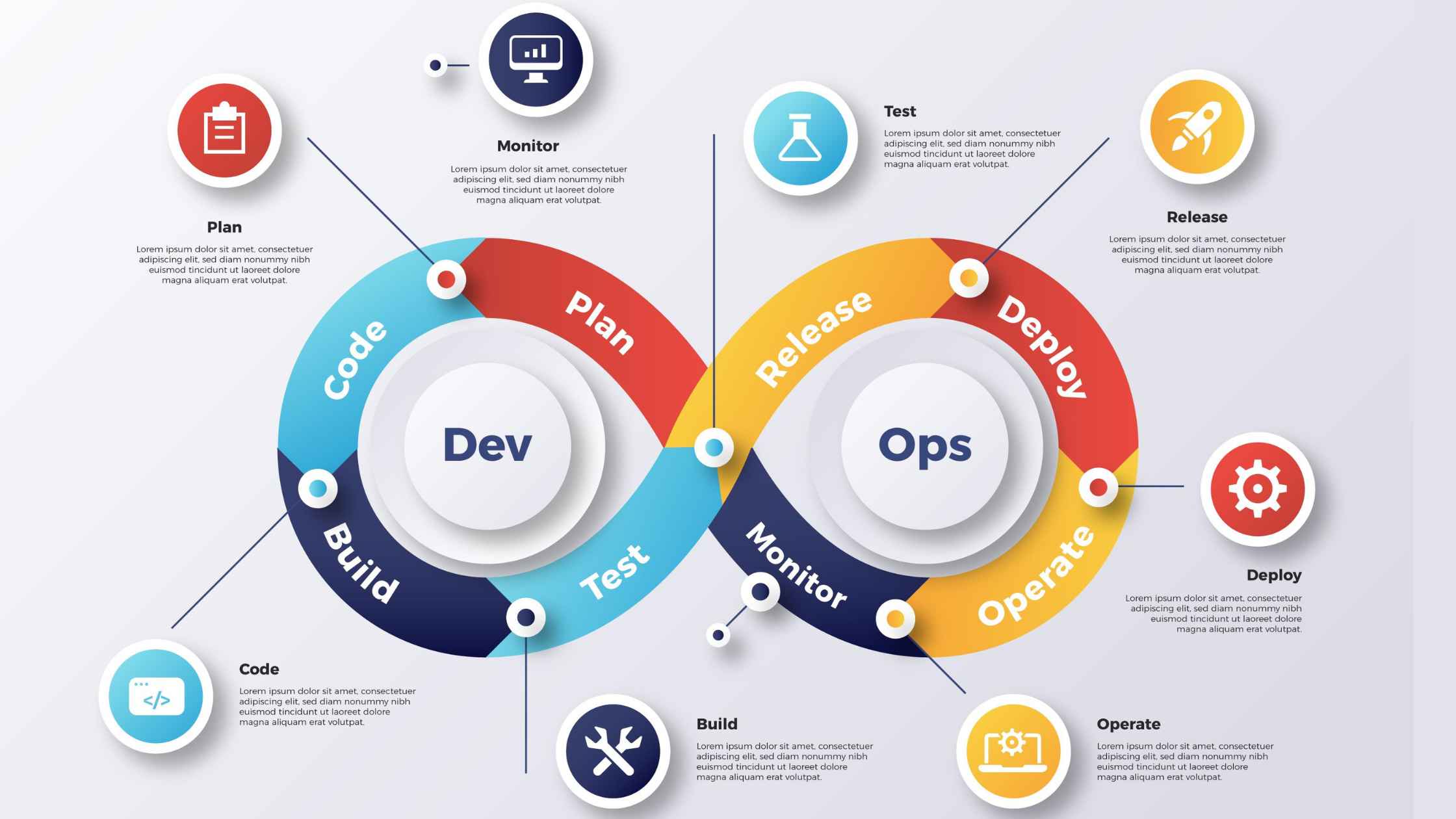Last Updated on September 30, 2025 by Chukwuemeka Maduka
TL;DR – Can I Learn DevOps In 6 Months?
Yes! You can learn devops and master essential DevOps skills in just 6 months with the right approach.
This comprehensive guide breaks down exactly what you need to learn, when to learn it, and how to land your first DevOps role.
From Linux fundamentals to Kubernetes orchestration, we’ll show you the proven path that transforms complete beginners into job-ready DevOps professionals earning $85,000-$155,000 annually. Whether you’re in Nigeria, the UK, or anywhere else, this roadmap works – and we’ll prove it.
Key Takeaways
Master the Fundamentals First: Linux, Git, and networking form your foundation – spend your first month here
Follow the 6-Month Timeline: Each month focuses on specific skills building upon previous knowledge
Practice with Real Projects: Hands-on experience with CI/CD pipelines and cloud deployments is non-negotiable
Target High-Demand Skills: Terraform, Kubernetes, and Docker are mentioned in 56%+ of DevOps job postings
Leverage Professional Training: Structured programs with mentorship accelerate your learning significantly
The technology industry has fundamentally shifted. Companies that once took months to deploy software updates now push changes multiple times per day.
This transformation didn’t happen by accident – it’s the direct result of DevOps practices revolutionizing how we build, test, and deploy software.
Learn DevOps skills today, and you’re positioning yourself at the center of this technological revolution.
DevOps engineer roles rank among the top 5 most in-demand IT positions globally, with job postings growing 18% annually since 2020.
In Nigeria, entry-level DevOps engineers start at $30,000 annually, while experienced professionals in the UK and US command salaries exceeding $155,000.
But here’s what makes this opportunity even more compelling – you don’t need a computer science degree or years of traditional IT experience to learn DevOps successfully.
The field rewards practical skills, problem-solving ability, and hands-on experience over theoretical knowledge.
What Is DevOps?

DevOps fundamentally bridges the gap between software development and IT operations, creating a unified approach that emphasizes collaboration, automation, and continuous improvement.
Think of it as the difference between a relay race and a synchronized swimming team – traditional IT operates in handoffs and silos, while DevOps creates seamless, coordinated workflows.
The transformation from traditional operations to DevOps is both technical and cultural. Traditional IT operations follow waterfall approaches with separate teams, manual processes, and infrequent releases.
DevOps embraces iterative cycles, cross-functional collaboration, and automated deployments that happen multiple times daily.
Real-world impact speaks louder than theory.
Companies implementing DevOps practices report 200 times more frequent deployments, 24 times faster recovery from failures, and 3 times lower failure rates.
Capital One’s DevOps transformation enabled them to migrate entirely to the public cloud while improving customer experience.
Amazon’s transition to microservices architecture became the foundation for AWS, now a multi-billion dollar business.
Learn DevOps In 6 Months [Roadmap]
How to learn DevOps effectively requires a structured approach that builds skills progressively. This roadmap on Learnwithpride transforms complete beginners into job-ready professionals through focused monthly objectives.
Month 1: Foundation Mastery
Linux becomes your second language during this critical first month. Since 90% of DevOps work happens on Linux-based systems, mastering command-line operations, file permissions, process management, and shell scripting creates your technical foundation.
Git and version control separate professional developers from hobbyists. You’ll learn repository management, branching strategies, merge conflicts, and collaborative workflows that every DevOps engineer uses daily.
Networking fundamentals include IP addressing, DNS resolution, SSH connections, and port management. These concepts become essential when managing cloud infrastructure and troubleshooting connectivity issues.
Expected outcome: Comfortable navigating Linux environments, managing code repositories, and understanding how applications communicate across networks.
Month 2: CI/CD and DevOps Mindset
Continuous Integration and Continuous Deployment represent the heart of DevOps philosophy. You’ll understand the complete software lifecycle: code → build → test → release → deploy → monitor.
Jenkins or GitHub Actions become your automation workhorses. Building your first automated pipeline that builds, tests, and deploys code automatically demonstrates the power of DevOps practices.
DevOps culture and collaboration principles transform how you think about software delivery. Breaking down silos between development and operations teams creates the collaborative mindset that drives successful DevOps transformations.
Expected outcome: Your first functioning CI/CD pipeline that automatically processes code changes from repository to deployment.
Month 3: Containerization and Orchestration
Docker containerization solves the “it works on my machine” problem by creating consistent environments across development, testing, and production. Master Docker images, containers, volumes, and multi-container applications.
Kubernetes orchestration manages containerized applications at scale. Understanding pods, deployments, services, and configuration management prepares you for enterprise-level container orchestration.
Microservices architecture concepts become practical as you deploy distributed applications across Kubernetes clusters. This month bridges the gap between simple applications and complex, scalable systems.
Expected outcome: Containerized applications running on Kubernetes with proper scaling and service management.
Month 4: Cloud Infrastructure and Infrastructure as Code
Cloud platforms (AWS, Azure, or Google Cloud) provide the foundation for modern infrastructure. Start with compute instances, storage services, networking, and identity management using free tier accounts.
Terraform for Infrastructure as Code transforms infrastructure management from manual tasks to version-controlled code. Provisioning entire environments through declarative configuration files revolutionizes deployment consistency.
Cloud architecture patterns include understanding load balancers, auto-scaling groups, database services, and content delivery networks. These components form the backbone of resilient, scalable applications.
Expected outcome: Complete web application deployed in the cloud using Infrastructure as Code principles.
Month 5: Monitoring, Logging, and Security
Observability practices distinguish reactive firefighting from proactive system management. Implement monitoring with Prometheus and Grafana, centralized logging with ELK stack, and alerting systems that prevent issues before they impact users.
DevSecOps principles integrate security throughout the development lifecycle rather than treating it as an afterthought. Learn vulnerability scanning, secrets management, and security testing automation.
Performance optimization includes understanding system metrics, application performance monitoring, and capacity planning. These skills become crucial as systems scale and performance requirements increase.
Expected outcome: Comprehensive monitoring and alerting setup with security scanning integrated into your CI/CD pipeline.
Month 6: Project Building and Job Preparation
Real-world project portfolio demonstrates your capabilities to potential employers. Build end-to-end projects incorporating all learned technologies: automated CI/CD pipelines, containerized applications, cloud infrastructure, and monitoring systems.
Interview preparation includes both technical demonstrations and behavioral questions. Practice explaining complex technical concepts clearly and demonstrating your problem-solving approach.
Professional networking connects you with DevOps communities, potential mentors, and job opportunities. Engage with local tech meetups, online forums, and professional groups.
Expected outcome: Job-ready portfolio, polished resume, and successful job applications for DevOps positions.
Essential DevOps Skills and Tools
The DevOps toolkit encompasses diverse technologies, but certain tools appear consistently across job postings and real-world implementations.
Programming and scripting skills remain fundamental across all DevOps roles. Python dominates automation scripting, while Bash handles system administration tasks. Understanding YAML for configuration files and basic SQL for database interactions rounds out your programming foundation.
Cloud-native technologies represent the future of infrastructure management. Kubernetes leads container orchestration, while service mesh technologies like Istio manage complex microservices communications. Understanding these technologies positions you for senior-level opportunities.
DevOps Career Prospects and Salary Expectations
The DevOps job market continues expanding despite broader tech industry fluctuations. While startup funding constraints affected some positions, traditional sectors including finance, healthcare, and manufacturing actively seek DevOps professionals.
Salary ranges vary significantly by geography and experience level:
United States: Entry-level positions start at $85,000, with mid-level engineers earning $120,000-$163,000, and senior professionals commanding $143,000-$180,000 annually.
United Kingdom: DevOps engineers earn competitive salaries with strong demand across financial services and emerging technology companies.
Nigeria: Entry-level positions offer $30,000 annually, with experienced professionals earning significantly more as the tech ecosystem matures.
Career progression in DevOps offers multiple specialization paths. Site Reliability Engineering (SRE) focuses on system reliability and performance. DevSecOps specialists integrate security practices throughout development lifecycles. Platform Engineering creates reusable infrastructure platforms for development teams.
Job security remains strong even during economic uncertainty. Organizations recognize that DevOps practices improve efficiency, reduce costs, and accelerate product delivery – making DevOps professionals essential rather than expendable.
Common Learning Challenges and Solutions
Information overwhelm affects many DevOps beginners facing seemingly endless tool choices and learning paths. Focus on mastering foundational concepts before exploring advanced specializations. The 6-month roadmap prevents this by sequencing learning logically.
Imposter syndrome impacts professionals transitioning from other fields or feeling overwhelmed by the breadth of DevOps knowledge. Remember that every expert started as a beginner, and practical experience matters more than theoretical perfection.
Lack of hands-on practice limits learning effectiveness when focusing solely on theoretical knowledge. Build projects constantly, even if they seem simple initially. Practical implementation solidifies understanding better than passive consumption.
Isolation during learning can reduce motivation and limit problem-solving resources. Join learning communities, find study partners, and engage with mentors who provide guidance and support throughout your journey.
Building Your DevOps Portfolio
Project portfolio quality often determines interview success more than resume credentials. Employers want to see practical implementations demonstrating your ability to solve real-world problems.
Essential portfolio projects should demonstrate diverse DevOps capabilities:
Automated CI/CD Pipeline: Build a complete pipeline that automatically tests, builds, and deploys a web application from source code to production environment.
Infrastructure as Code Implementation: Use Terraform to provision cloud infrastructure including compute instances, databases, load balancers, and networking components.
Container Orchestration Project: Deploy a multi-service application using Docker containers managed by Kubernetes with proper scaling and service discovery.
Monitoring and Alerting System: Implement comprehensive monitoring using Prometheus and Grafana with alerting rules that notify administrators of system issues.
Documentation quality separates professional portfolios from student projects. Include clear README files explaining project purpose, setup instructions, architecture decisions, and lessons learned during implementation.
The Business Impact of DevOps
Organizations implementing DevOps practices achieve measurable improvements across multiple business metrics. Understanding this impact positions you as a strategic asset rather than just a technical resource.
Deployment frequency increases dramatically with DevOps practices. Netflix deploys thousands of times daily, while traditional organizations might deploy monthly or quarterly. This acceleration enables rapid response to market opportunities and customer feedback.
Recovery time from failures decreases from hours or days to minutes. Automated monitoring, rollback capabilities, and standardized environments enable rapid problem resolution. Capital One reduced system recovery time by 60% after implementing comprehensive DevOps practices.
Quality improvements result from automated testing, consistent environments, and continuous monitoring. Bugs discovered in production cost 10-100 times more to fix than those caught during development.
Cost optimization emerges through automation reducing manual effort, cloud resources scaling dynamically, and improved system reliability reducing downtime costs. Infrastructure as Code eliminates configuration drift and enables cost-effective environment management.
Transitioning to DevOps: Practical Steps
Career transition planning requires strategic thinking about your current skills, target role requirements, and learning timeline. DevOps welcomes professionals from diverse backgrounds – system administrators, developers, network engineers, and project managers all bring valuable perspectives.
Skill mapping identifies transferable abilities from your current role. System administrators understand infrastructure and troubleshooting. Developers grasp software architecture and coding practices. Network engineers comprehend connectivity and security fundamentals.
Learning timeline management balances ambitious goals with realistic expectations. Consistent daily practice trumps intensive weekend cramming. Dedicate 1-2 hours daily to structured learning and hands-on practice rather than sporadic longer sessions.
Professional networking opens opportunities before you complete your transition. Attend local tech meetups, engage with DevOps communities online, and connect with professionals in your target companies. Many opportunities arise through relationships rather than cold applications.
The DevOps revolution continues transforming how organizations build and deploy software. Learning DevOps positions you at the forefront of this transformation, with excellent career prospects, competitive compensation, and continuous learning opportunities.
This 6-month roadmap provides the structure and focus needed to learn DevOps effectively. Success requires commitment, consistent practice, and strategic learning choices. Whether you’re starting from scratch or transitioning from another technical role, the path forward is clear and achievable.





